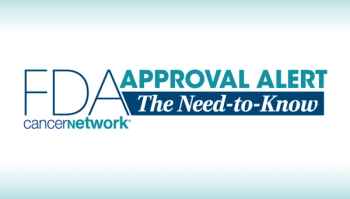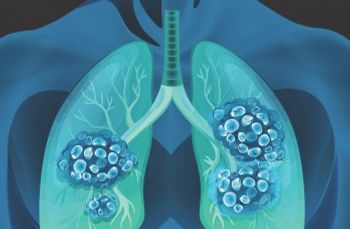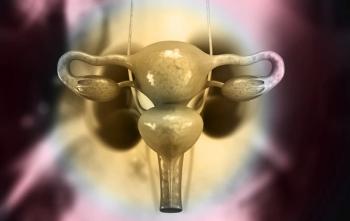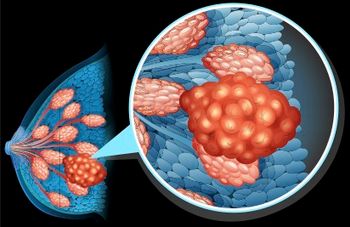
Two-Fraction SBRT Shows Acceptable Toxicity in Prostate Cancer Population
Grade 2 or higher genitourinary acute toxicity was observed in 27.3% of patients treated with 2 fractions of SBRT vs 29.2% of patients treated with 5 fractions.
Two-fraction stereotactic body radiation therapy (SBRT) displayed feasibility and tolerability as a treatment for patients with intermediate/lower high-risk prostate cancer with visible gross tumor volume on multiparametric MRI compared with 5-fraction SBRT, according to findings from the phase 2 HERMES/R-IDEAL 2b trial (NCT04595019) published in the International Journal of Radiation Oncology, Biology, Physics.
Among 47 patients, including 23 assigned to 2-fraction SBRT and 24 assigned to 5-fraction SBRT, no grade 3 genitourinary (GU) or gastrointestinal (GI) toxicities occurred. Among patients treated with 2-fraction vs 5-fraction SBRT, the rate of grade 2 or higher GU toxicities was 27.3% (n = 6 of 22; 95% CI, 11%-50%) and 29.2% (n = 7 of 24; 95% CI, 13%-51%) in the respective cohorts. A total of 24 grade 2 or higher GU events were observed across both arms.
Results showed that grade 2 or higher GU toxicities peaked in 4 weeks with the 2-fraction regimen vs 2 weeks with 5-fraction SBRT. Additionally, grade 2 or higher urinary frequency was observed in 4.5% of patients by week 2 and 13.6% of patients by week 4 in patients treated with 2-fraction SBRT. With 5-fraction SBRT, the 2-week and 4-week grade 2 or higher urinary frequency rates were 16.7% and 12.5%.
Furthermore, in the 2-fraction group, no patients experienced grade 2 or higher GI toxicities vs 6.8% (95% CI, 3%-32%) among patients treated with 5-fraction SBRT. No grade 2 or higher GU late adverse effects were observed at 6 months; by 12 months, only 2 were reported, including 1 in each cohort. Additionally, no grade 3 or higher GU late toxicities occurred.
“The results [from the phase 2 trial] suggest comparable rates of acute grade 2 [or higher] GU toxicity in the 2-fraction and 5-fraction groups and exclude significantly higher toxicity than that seen in [the PACE trial (NCT01584258)],” Sian Cooper, FRCR, clinical research fellow at The Royal Marsden National Health Service Foundation Trust, wrote in the publication with study coinvestigators. “Acute urinary toxicity appears to peak earlier in the 5-fraction SBRT group in week 2 compared with week 4 after 2-fraction treatment.”
The single-center, phase 2 HERMES trial enrolled patients with intermediate or lower high-risk localized prostate cancer planned for radical radiation therapy and randomly assigned them 1:1 to receive 5-fraction SBRT over 10 days or 2-fraction SBRT over 8 days.
Patients assigned to either 5- or 2-fraction SBRT had median age of 73 years (range, 54-82) vs 74 years (range, 61-84), and most patients were White (87.5% vs 73.9%). The median prostate-specific antigen levels were 8 ng/mL (range, 3-23) vs 7 ng/mL (range, 2-21), and most patients had a Gleason score of 3 + 4 (75.0% vs 56.5%) as well as stage T2 disease (66.7% vs 78.3%). Furthermore, the majority of those treated had intermediate disease per NCCN risk group classification (79.2% vs 78.3%).
The primary end point of the trial was proportion of patients with Common Terminology Criteria for Adverse Events (CTCAE) grade 2 or higher GU toxicity up to 12 weeks after treatment. Secondary end points included acute and late physician-reported toxicity per CTCAE and the incidence of grade 2 or higher GU toxicity at 6 and 12 months. The study also evaluated quality of life (QOL).
Regarding QOL, the baseline International Prostate Symptoms Score (IPSS) in the 2- and 5-fraction groups, respectively, was 6.5 (IQR, 4-11) vs 4 (IQR, 2-6). The peak total score was 8 (IQR, 4-11) in the 2-fraction group at week 4; it was 13.5 (IQR, 10-17) in the 5-fraction group at week 2. By week 12, the respective IPSSs were 6 (IQR, 2-8) and 8 (IQR, 3-11) in each respective cohort.
Reference
Cooper S, Westley RL, Biscombe K, et al. HERMES: randomized trial of 2-fraction or 5-fraction magnetic resonance imaging−guided adaptive prostate radiation therapy. Int J Radiat Oncol Biol Phys. 2025;123(3):773-782. doi:10.1016/j.ijrobp.2025.05.008
Newsletter
Stay up to date on recent advances in the multidisciplinary approach to cancer.



















































































